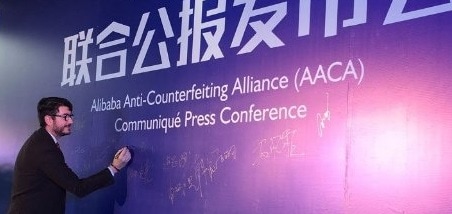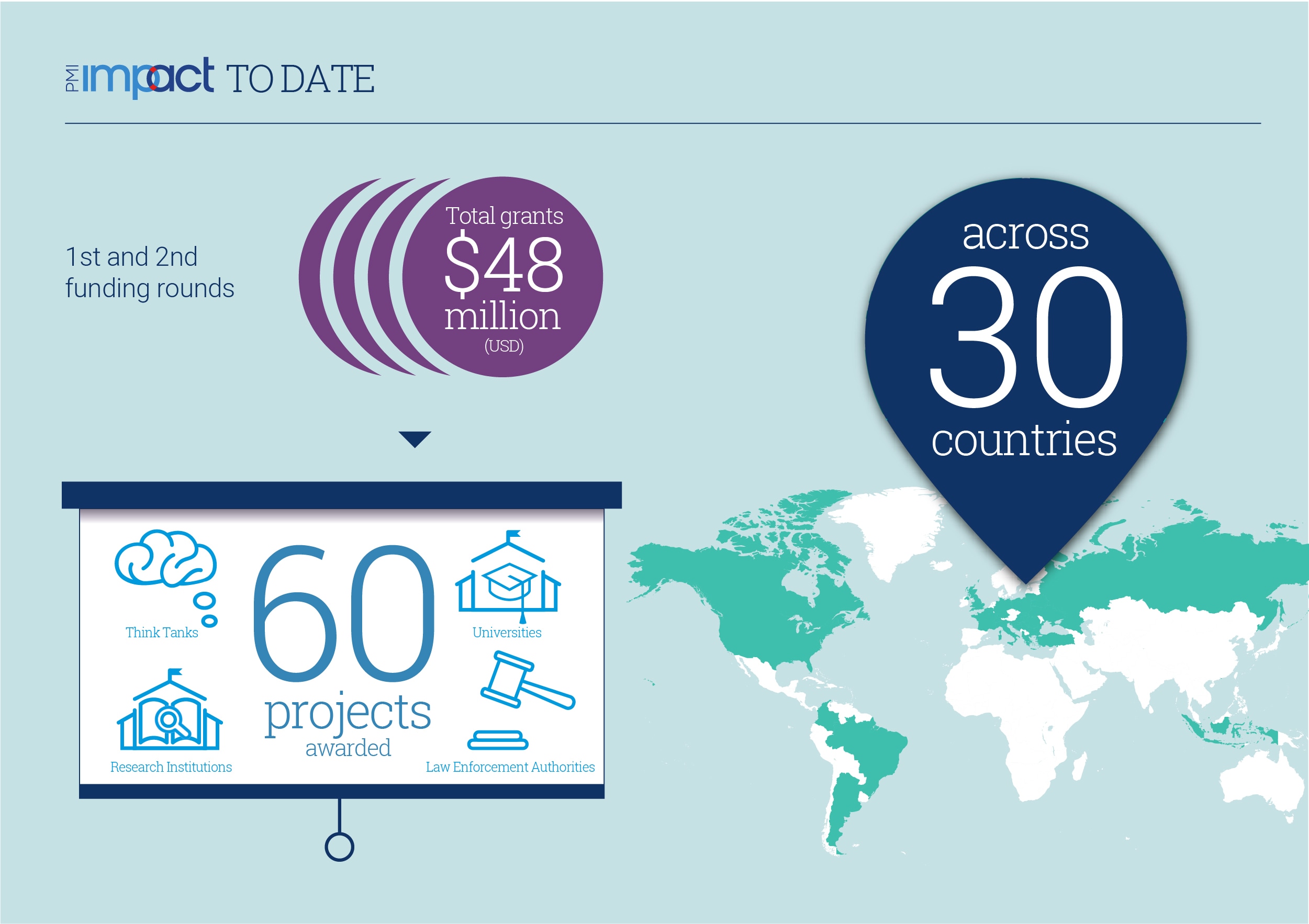
To beat illicit traders online, we must destroy their web of crime
6 MAR 2020

Pirate spiders are like no other animal of its kind. They don’t build their own web—a painstaking, labor-intensive exercise. Instead, they just invade and colonize the webs of other spiders. They attract their prey in their own web, trap them and then kill them. They let their rival do the hard work and then reap the benefits. To the human observer it is cruel—but it’s also undeniably highly effective.
When I first read about these animals, I immediately thought about a subject that for me is much closer to home. Illicit traders work in a very similar way. They take away the networks of legitimate supply chains and use them until they break down, and then they move on to find another tool to catch their next prey. They do this with any market they encounter. The online marketplace is no different. It’s just another type of web that’s ripe for abuse.
More than 20 years since e-commerce came into our lives, technology continues to transform shopping. It has revolutionized the way businesses and consumers interact. New global marketplaces emerge with every technological advancement. Buying and selling is now easier, cheaper and faster than ever before. By 2021, it is predicted that 2.1 billion people will be buying goods and services online, worth almost USD 5 trillion.
Digital platforms have undoubtedly been a blessing. They have broadened consumer choice, driven innovation forced by competition, speeded up shipping times, reduced costs and created jobs. Yet, they have also created new opportunities for criminal networks. They have become yet another battleground between those who wish to preserve and those who wish to exploit the freedoms that we all cherish.
The internet and global trade: From offline to online to social
Internet-enabled devices, particularly smartphones, have driven this continued growth and allowed the digital retail space to evolve. It is booming around the world.
- Last year, 90 percent of internet users visited a web-based online retail store.
- 66 percent of internet users used shopping app.
- Nearly three quarters (74 percent) of consumers purchased a product online; over a third (36 percent) via a laptop/desktop computer and over half (52 percent) via a mobile device.
E-commerce is a web of several different things that all interconnect. It’s no longer just a single marketplace. It’s a consumer journey where shoppers can jump on or off at a wide variety of points. They will often start at a search engine, a review site, a video platform, a price comparison site or a social media channel before they then finish off their purchase on an e-marketplace, web shop or even a messaging app—the important thing being only that this bit of the journey has the infrastructure of trade (e.g., payment processing, shipment service and consumer care).
The complexity of this system—the fact there are so many jumping on and off points—means it is ready for exploitation by criminals.
Illicit traders mimic legitimate businesses, building their version of a complete online consumer journey, using all channels to attract prospective buyers and sell to them. This web of crime misleads consumers and, even worse, often puts fakes in their hands that can be less safe than the products they thought they were buying. Their networks, unlike the legitimate ones they seek to replace, are a digital Wild West, a “lawless” environment, building heavily on loopholes in regulation and the lack of law enforcement’s ability to check and enforce against small consignments sent by millions of “avatars.”
They are infiltrating supply chains and marketing their goods and services, all under the veil of anonymity granted by technology. A reported 25 percent of social media profiles are avatars, allowing criminals to hide in plain sight. Illicit trade is thriving and breeding on all channels of online trade. Last year, Ghostdata research revealed that around 20 percent of posts about top fashion brands on social media featured counterfeit and/or illicit products.
The respective authorities and regulatory bodies simply cannot keep abreast of those exploiting the myriad of channels. And the results are clear. Today, there is no need for users to enter the dark web to purchase illicit goods—they are readily available on the “surface web.” As far back as 2016, Apple sued an Amazon supplier for selling fake products on the global retailer’s U.S. platforms. These technology-enabled networks are increasingly hard to shut down; as one seller is disrupted or dismantled, another arises quickly with a new route to market.
How to safeguard e-commerce?
There is only one way to beat this, which is to work together. We must remind ourselves of the benefits of a legitimate supply chain—of the ecosystem we have all created. All actors must do our bit.
Let’s start with those of us in the private sector. Where relevant, register your IP—don’t let that slip. The next step: set up brand registry and enforcement programs. Enforce that IP. And finally, invest in technology. Advance AI and machine learning can help detect false offers, fakes, illicit clusters and repeat offenders quickly.
The e-commerce community must work harder and, as a first step, look to replicate the same principles that apply to offline trade to online, particularly when dealing with those breaching the terms of legal trade. Some of the largest platforms already have robust processes in place, but illicit trade is far from being gone. It’s harder for smaller platforms, though. These things take investment. Protection mechanisms are expensive, and smaller businesses need help.
Authorities have a role, of course, too. In many cases, we need better laws. In many jurisdictions, the penalties for taking part in online illicit trade are too soft—they aren’t a deterrent. Governments also need to give law enforcement better tools to do their job—that often means better technology that helps them keep one step ahead. But it’s not just law enforcement that can play a part. When international regulators agree on cross-border standards for e-commerce, that can make a big difference. They can implement supply chain solutions based on trust (such as blockchain). They can implement smart-border solutions using new technology—for example, automating the scanning and checking of small consignments or mixed pallets and containers. We should celebrate the efforts being made by the WCO, the WTO, UNCTAD and the OECD, which are all working on establishing standards on e-commerce. We should back up the EU Commission and the U.S. Department of Homeland Security in their initiatives to tackle online counterfeiting.
And finally, consumers need to recognize and buy into the benefits of genuine products and legitimate supply chains. We need to help them do this, but before that we have to understand consumer attitudes better, especially in light of generational shifts, cultural differences and economic needs. Only together with the consumer can this global illicit trade be contained.
Technology is an ally in the fight against illicit trade, even if it is abused by those with bad intentions. However, technology itself isn’t enough to beat illicit trade. It needs human commitment, too. Those looking to keep abreast of criminals must harness innovation, capitalizing on the speed and accuracy offered by emerging new technologies to secure supply chains and detect and address illicit trade. And they need to talk to each other.
The responsibility of tackling illicit trade is shared by everyone involved. We must cooperate more and develop cross-border relationships and collaborations. The potential reward is huge. The WEF estimates that illicit trade takes out USD 2.2 trillion—or nearly 3 percent—of the world’s economy every year. “If it were a country, its economy would be larger than Brazil, Italy and Canada—and as large as Mexico and Indonesia combined,” a recent report said.
Imagine reinjecting that amount of money back into the hands of legitimate businesses ever year. Imagine how much could be spent on innovation that could benefit us all. On jobs that could benefit those who don’t have them. Imagine the hundreds of consumers who would have safer, regulated products in their hands. Imagine the—perhaps billions—of dollars of taxes that could be reclaimed by government to spend on those who most need help.
For all these reasons and more, we must recapture the web of international trade from the pirate spiders of illicit trade who wish to exploit everything society has built.



